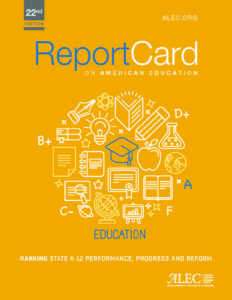
DeVos Should Stand Proud of Record Championing Choice in Education
At her hearing on January 17, Secretary of Education nominee Betsy DeVos is likely to field hostile questions from some Senators about her advocacy for educational choice. In what many education reforms would see as an unmatched recommendation, the president of AFL-CIO affiliate American Federation for Teachers, Randi Weingarten, waxed hysterical about DeVos’ supposed “anti-public education” stances, referencing DeVos’ support for public charter schools and educational choice programs like tax credit scholarships, vouchers and education savings accounts.
Educational Choice
Educational choice has not always been treated as a partisan issue. In 2014, conservative Senator Ted Cruz and progressive Representative Sheila Jackson Lee took to the stage together to praise school choice for bringing more options to often-disadvantaged families. Although some at Mrs. DeVos’ hearing may try to paint her support for choice as a divisive issue, they will only succeed in revealing themselves as reflexively partisan.
Contra Weingarten and other defenders of the status quo, the current $600 billion education system is not working for many American families. As even the New York Times now admits, being a relatively profligate spender on K-12 education has not helped the United States inch up in recent PISA results. Domestically, NAEP scores have dropped after decades of flatlining, and decades of federal spending has failed to move the needle on student academic proficiency.
In contrast, the school choice policies DeVos supports have a track record of improving student outcomes across multiple measures. A meta-analysis done by the University of Arkansas looked at 19 different statistical evaluations of 11 school choice programs and found substantial and sustained test score gains for students in both reading and mathematics.
Test Scores
Test scores, while important, are only one indication of a student’s success. In fact, focus groups have found that parents tend not to heavily rely on standardized test scores to evaluate school performance, probably because they can see, in ways researchers can never duplicate, the day-to-day effects a good learning environment has on a child’s motivation and love of learning.
While it is impossible (not to mention unethical and creepy) for researchers and policymakers to duplicate the kind of observation parents use to judge educational excellence, indicators besides test scores may help produce a fuller picture of the efficacy of school choice programs, and among these measures, school choice success continues to shine through.
Students in the Milwaukee voucher program were 42 percent less likely to be convicted of a crime and a whopping 79 percent less likely to be convicted of a felony than their statistically-matched public school peers. Parents who are empowered by educational choice programs report higher participation in their children’s educations than they did when the same families had their children enrolled in traditional public schools. And families utilizing Arizona’s trailblazing education savings account program are overwhelmingly satisfied with their children’s educational providers, in stark contrast to their dissatisfaction with their previous public schools.
Conclusion
Mrs. DeVos should be proud of her record of championing educational choice as the path to the American Dream, especially for some of the United States’ most vulnerable students, who are bearing the brunt of the current system’s expensive failure.
Due to a schedule change, Mrs. DeVos’ hearing has been moved to January 17. This article has been updated to reflect the change.



